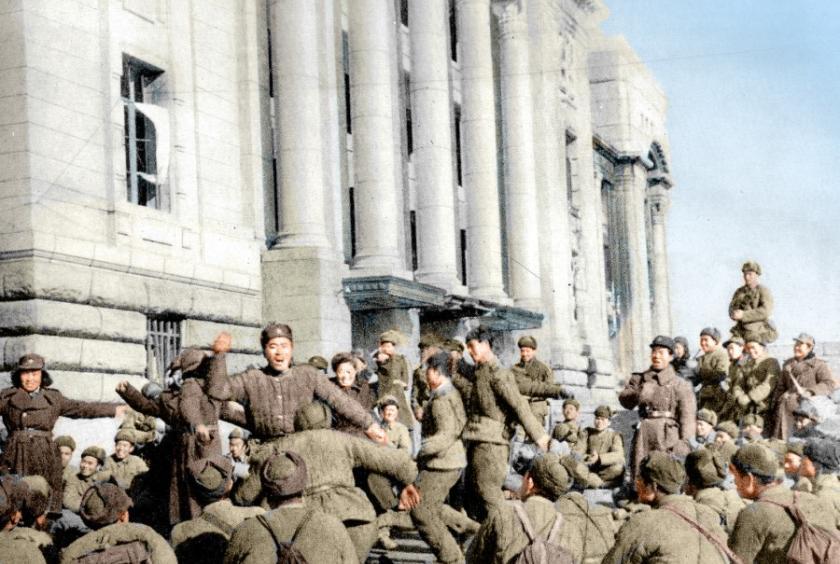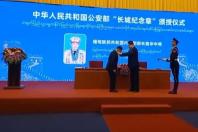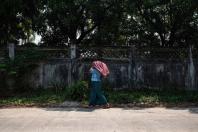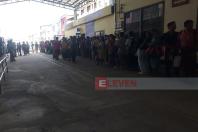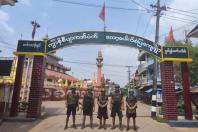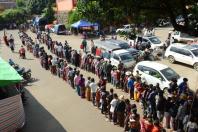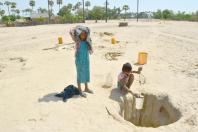Among the countries that had United States’ involvement in wars, South Korea, officially named the Republic of Korea (ROK), is the only country that has progressed and prospered.
Other countries (in which the United States was involved militarily) disintegrated or collapsed, fell under control of authoritarians, plunged into deep poverty or economic crisis due to political instability, lacked security due to internal conflicts, and/or surrendered power to undemocratic blocs.
Tracing back to the history of the US Army Military Government in Korea (USAMGIK) (1945-1948), South Korea has reached the sixth era of the Republic of Korea after going through the previous five eras in extremely difficult circumstances. One cannot assume that South Korea became a democratic country as a direct consequence of the Korean War. After the Korean War, South Korea had long periods of mass protests, military coups, and authritarians regimes. The consequences can still be seen in this present period, which includes the lack of reunification between the two Koreas, frequent leftist protests due to the country’s involvement in the Vietnam War as an US ally and successive governments’ permission for U.S. military deployments, and burdens on loan settlements after seeking investments from the U.S. Additionally, North Korea is still suffering from the dictatorship since the Korean War. It can be observed that the Truman Doctrine of “doing whatever was necessary to contain spread of communism around the world” did not work.
(1) Korean War
Among the countries that had United States’ involvement in wars, South Korea, officially named the Republic of Korea (ROK), is the only country that has progressed and prospered.
Other countries (in which the United States was involved militarily) disintegrated or collapsed, fell under control of authoritarians, plunged into deep poverty or economic crisis due to political instability, lacked security due to internal conflicts, and/or surrendered power to undemocratic blocs.
Tracing back to the history of the US Army Military Government in Korea (USAMGIK) (1945-1948), South Korea has reached the sixth era of the Republic of Korea after going through the previous five eras in extremely difficult circumstances. One cannot assume that South Korea became a democratic country as a direct consequence of the Korean War. After the Korean War, South Korea had long periods of mass protests, military coups, and authritarians regimes. The consequences can still be seen in this present period, which includes the lack of reunification between the two Koreas, frequent leftist protests due to the country’s involvement in the Vietnam War as an US ally and successive governments’ permission for U.S. military deployments, and burdens on loan settlements after seeking investments from the U.S. Additionally, North Korea is still suffering from the dictatorship since the Korean War. It can be observed that the Truman Doctrine of “doing whatever was necessary to contain spread of communism around the world” did not work.
The Korean War is the very first military operation of the Cold War. The Cold War is a term commonly used to refer to a period of geopolitical tension between the United States and the Soviet Union and their respective allies, the Western Bloc and the Eastern Bloc. Essentially, the Korean War means a proxy war among the superpowers over the ideologies of communism and democracy. It is also a war between South Korea and North Korea with involvement of many countries from behind the scenes during the Cold War. North Korea was supported by China and the Soviet Union while South Korea was supported by the United States and allied countries.
The Korean War was fought between North Korea and South Korea from 1950 to 1953. The war began on 25 June 1950 and ended with an armistice on 27 July 1953. However, no peace treaty was ever signed, and the two Koreas are technically still at war, engaged in a frozen conflict. There are frequent clashes in the Korean Demilitarized Zone (DMZ) across the Korean Peninsula near the 38th parallel north.
Background
Imperial Japan annexed Korea, a country that it ruled for 35 years until its surrender at the end of World War II on 15 August 1945. The United States and the Soviet Union divided Korea along the 38th parallel into two zones of occupation. The Soviets administered the northern zone and the Americans administered the southern zone. The Provisional Government of the Republic of Korea was founded in 1919 in Nationalist China. Its President at that time was Syngman Rhee. In 1945 after World War II, the US purged the Syngman Rhee government, and elections were held only in 1948.
In 1948, two sovereign nations emerged on the Korean Peninsula. A socialist state, the Democratic People's Republic of Korea, was established in the north under the totalitarian communist leadership of Kim Il-sung while a capitalist state, the Republic of Korea, was established in the south under the authoritarian, autocratic leadership of Syngman Rhee. Both governments of the two new Korean states claimed to be the sole legitimate government of all of Korea. In the south, supporters of communism and communists were suppressed while Kim Il-sung prepared to invade the south with intent to establish a single Korea. First, North Korean proposed South Korean to merge as one under communism. The Syngman Rhee government turned it down. Despite its desire for reunification, South Korean was not willing to run under communism. On June 25, 1950, troops from the north crossed the 38th parallel.
The Soviet Union and China born together with Mao Zedong’s communism supported North Korea. The United Nations denounced the North Korean move as an invasion. Tensions heightened as the Soviet Union boycotted many of the provisions.
Prelude to war
The US and communism
US President Roosevelt died suddenly on April 12, 1945 and Vice President Truman become President, who ordered dropping nuclear bombs into Japanese cities to end the war. Later, tensions increased between the US and the Soviet Union leading to cold wars.
In China, the national government weakened and fled to the Taiwan Island. Mao Zedong’s communism overwhelmed the whole China, which then became a communist country. It became an ally of the Soviet Union. The US did not want communism to spread from one country to another, especially small and newly independent countries. To prevent it, the Truman Doctrine was adopted, thereby leading to the formation of NATO.
North Korea
North Korea leader Kim Il-sung desired reunification with South Korea. He asked for help from Soviet leader Stalin, who initially refused but later agreed. Kim Il-sung wanted the international community to regard his country’s invasion of South Korea just an act of reunification.
South Korea
The Syngman Rhee government in South Korea also suppressed supporters of communism and those suspected to be supporters. The Jeju uprising was notable for its extreme violence; between 14,000 and 30,000 people (10 percent of Jeju's population) were killed, and 40,000 fled to Japan. The incident happened from April 1948 to May 1949.
Reasons for US involvement
There were main reasons why the US quickly responded to North Korean invasion. The most significant reason was domino theory. Under such a theory, if one country in a region came under the influence of communism, then the surrounding countries would follow. Truman believed that if Korea allied with the Soviet Union, Japan would become another communist country. The US wanted not only to control communism but also to prevent domino effect. Truman was gravely concerned that if Korea fell, Japan, which is crucial for US trade, would be next.
The majority of American people believed that the US was duty-bound to implement the Truman Doctrine as pledged. The Truman Doctrine is an American foreign policy that pledged American "support for democracies against authoritarian threats. The doctrine originated with the primary goal of containing Soviet geopolitical expansion during the Cold War. It was announced to Congress by President Harry S. Truman on March 12, 1947, and further developed on July 4, 1948, when he pledged to contain the communist uprisings in Greece and Turkey. Historians often use Truman's speech to mark the start of the Cold War.
The Americans vowed to prevent Stalin believing that Soviet was behind the North Korea invasion. The also believed that they would achieve victory and that China would not dare to intervene. Taking advantage of Soviet’s boycotting, the United States expected to get UN permission for its military aid for South Korea.
The spread of Communism to other countries compelled the US to make an ultimate decision. Some examples are Soviet’s first nuclear bomb testing in 1949, Berlin Blockade (1948-1949) and China’s transition for communism.
The outbreak of war
The war began when North Korea invaded South Korea following clashes along the border and rebellions in South Korea. North Korea was supported by China and the Soviet Union while South Korea was supported by the United States and allied countries. Clashes began across the 38th parallel on June 25, 1950 when North Korean military forces crossed the border and drove into South Korea. Some people also said South Korea troops initiated firing. As South Korea had no tanks and anti-tank weapons, North Korea forces were able to march quickly.
Fall of Seoul
South Korean President said he and his cabinet members as well as the congress would remain in capital Seoul. Danger increased as North Korea troops approached quickly. The Syngman Rhee government fled to Busan.
On 28 June South Korean troops demolished the bridge across the Han River trapping North Korean soldiers and killing hundreds of refugees evacuating the city. In the aftermath of the incident, public support for the Syngman Rhee government waned. The movement of the North Korean troops could be delayed, but Seoul fell on that day.
US involvement (July and August – 1950)
As soon as the North Korean invasion was heard, US President Truman held discussions over the Korean affairs. The President and the State Secretary received congressional approval for US$12 billion in military spending on the Korean War.
The President ordered Commander-in-Chief General Douglas MacArthur settled in Japan after World War II to move his troops to South Korea.
UN resolutions
On June 25, 1950, the Union Nations Security Council condemned the North Korean invasion with Resolution 82. The veto-wielding Soviet boycotted UN meetings for its recognition of the Taiwan government as China’s representative to the UN in January 1950.
According to Resolution 83, the UNSC decided to send UN troops to the Republic of Korea. On the same day, US President Truman send air force and naval troops. On July 4, the Second Foreign Minister of Soviet accused the US of launching hostilities on behalf of South Korea. Soviet challenged for the war legitimacy with several reasons.
July September 1950
The Battle of Osan, which took place on July 5, was the earliest battle between United States and North Korea. The US 25th Infantry Division, which had moved from Japan, was ill-equipped to match the tanks from the north. The Americans were defeated in the Battle of Osan, and about 180 Americans died, injured and captured. The American troops had to retreat all the way, and the North Korean troops started a heavy offensive towards the south. From the 14th to the 21st, the battle of Taejon took place in the city of Taejon, an important city where the infantry was based. Northern troops won the battle and captured the regiment's commander, William Dean. He was the highest-ranking officer on the American side to be captured during the war. North Korea won the battle, but the other US forces had enough time to entrench themselves in Busan. Due to its geographical location, Busan was not easily penetrated by enemies.
By September, the North had captured much of the Korean peninsula. The South's government and U.S forces could only hold Busan, 140 miles southeast of the Korean peninsula. The southern government's territory is only on one side of the Nakdong River. UN security forces have also arrived and are firmly stationed in Busan. In addition, Busan was a port city so supplies could be made.
Battle of Busan
As UN forces spread out across the area, the Northern forces divided their forces into four groups and attacked the main UN forces. However, they underestimated the strong presence of UN troops. It became difficult for the four groups to communicate with each other and support each other.
The Soviets also covertly supported the North's forces in view of the nuclear tension between them and the U.S. Therefore, American troops who can use the air force have an advantage. Communist China could only help the Northern Army by land. Northern forces were weakened and supplies ran out. The US Air Force also opened fire on routes used by northern forces. The battle, which lasted more than a month, was won by the U.S forces, with heavy losses on both sides.
Battle of Inchon (September 1950)
UN troops are holding out in Busan, intending to retake Seoul. Before the war, preliminary operations were conducted. The soldiers were being trained in Japan but they didn’t know about what they were preparing for. Near the end of the Battle of Busan, Operation Chromite began. The northern forces that had reached Busan resisted with a small force at Inchon. The retreating troops are also tired. Incheon was finally recaptured after the UN forces, consisting mostly of Americans, launched offensive attacks from land, sea and air. However, the city of Incheon was left in ruins. The Battle of Inchon led to the recapture of Seoul.
Recapturing Seoul
On September 25, UN forces recaptured Seoul. There was a lot of fighting in the city, and finally the UN forces were able to hold the important buildings of the city. The northern forces had to retreat to the west of the 38th parallel. Soviet leader Stalin also convened an emergency politburo meeting and condemned the incompetence of the northern forces.
Discussing war settlement
India and the Arab countries have tried hard to pacify this war, and representatives from the United Nations, led by General Harrison, and representatives led by North Korean General Nam- Il have met several times.
Finally, both sides came to an agreement, and on the morning of July 27, 1953, they signed a ceasefire agreement at the Panmunjom camp. In addition to the representatives of both sides who discussed the treaty, the North Korean Commander-in-Chief and Prime Minister Marshal Kim Il-sung, Chinese People’s Volunteer Army Commander Brigadier General Peng Dehuai and United Nations Commander-in-Chief Brigadier General Mark Clark also signed.
This Korean War was fought for more than three years and one month. Many buildings and major industries were destroyed. There are more than 2.3 million of victims and captives. According to the armistice agreement, the armies of both sides had to withdraw two kilometers (about one mile and two furlongs) back from where they arrived along the line of battle.
South Korea's six republican eras
During the era of the First Republic (1948-60), the war between South and North Korea broke out, and the wounds of the war have not yet healed. The main policy of the First Republic was anti-communism and "expansion northward as much as possible to consolidate the power of the south." However, university students were dissatisfied with the dominance of US-backed forces in domestic politics and protests broke out even on the presidential Election Day in March, 1960. On April 19, 1960, students from various universities and elementary schools protested across the country and took to the streets of Seoul, which became known in history as the "April Revolution". The government issued a martial law and called in the army to suppress it with direct fire. The entire country was shocked by this crackdown. On April 25, professors from various universities took to the streets again to protest. The next day, the Rhee Syng-man-led government officially resigned, and the president fled abroad.
The Second Republic era (1960 - 1963) began with the formation of an interim government after the April student revolution and the holding of parliamentary elections in late July. Democratic Party which was the opposition party during the First Republic era won the election, and the constitution was amended so that the government was chosen by the parliament instead of the president. In August 1960, Yon Po-sun became president and Prime Minister Chang Myon was also elected as the leader of the government. They, like the First Republic, faced various movements of protest forces, most of which originated from the university students who are leftists. There were more than 2,000 demonstrations in the first eight months when the teachers unions, press unions and trade unions emerged. More than 40,000 people have been investigated for links to the protesters or for corruption, including 4,000 armed police and 2,200 civil servants who have been fired. In turn, the government also reduced its military strength to 100,000. Faced with domestic instability, the economy collapsed, and between the fall of 1960 and the spring of 1961, the Korean won collapsed against the US dollar in half. The government of the Second Republic, which came to power with popular support, was unable to carry out effective reforms, so a military group led by General Park Chung-hee seized power on May 16, 1961.
Although Park Chung-hee was a general who wanted to reduce the military's involvement in politics, historians say that this military coup was chosen due to the removal of the armed forces and personnel by the Second Republic government and the rise of communists. His military regime (1961 - 1963) dissolved parliament and replaced it with military officers. It was announced that anti-communism, greater relations with the United States, emergence of "new and clean character" in government departments, self-help business, Korean reunification and democratic reform will be implemented within two years. In order to control the activities of the opposition, the junta established the Korean Central Intelligence Agency (KCIA), and in December 1962, the constitution was amended to return to a presidential form of government, which was approved by 78 percent of the votes. Although Park Chung-hee and the coup leaders had promised not to participate in the upcoming elections, he was nominated as the presidential candidate of the newly emerging Democratic Republican Party (DRP) and narrowly won the 1963 election to become president.
The Third Republic era (1963 - 1972) can be said to be the reign of Park Chung-hee. He proclaimed "Development is first, Reconciliation is secondary," and sought capital assistance from Japan and the United States to set up large-scale industrial and chemical plant conglomerates. Such government-to-government cooperation businesses were later known as Chaebol. The Japan-Korea Treaty was signed in 1965 without acknowledging Japan's actions against Korea during World War II, which sparked domestic protests. Similarly, in 1966, the stationing of American forces in South Korea was officially recognized, and between 1964 and 1973, more than 300,000 Korean soldiers were sent to the Vietnam War, which the United States went to fight. In the 1967 presidential election, Park Chung-hee won the second term with 51.4 percent of the vote. In 1969, Park Chung-hee tried to amend that article through the parliament because of the provision that "the president cannot serve more than two terms". Because of the amendment of the constitution, large-scale protests emerged, and despite the large amount of support for the opposition leader Kim Dae-jung, in the 1971 presidential election, Park Chung-hee was elected as president for the third time.
The period from 1972 to 1979 was the era of the Fourth Republic of South Korea. According to the new constitutional amendment, Park Chung-hee's term of office has been increased to six years, and the right to be elected an unlimited number of times has been obtained. The legislative branch and the judicial branch were also brought under the executive power of the president.
Education curricula glorified the 1961 military coup, and despite social and political instability, the export-based economic model continued to thrive under the dictator Park Chung-hee. The first two five-year plans were successful, and during the third and fourth five-year plans, large-scale and chemical manufacturing were targeted to promote steel production and oil refining. Chaebol businesses were given top priority, and much of the development aid originated from foreign investment. The cycle went on as all the lucrative profits were used for loan repayments and giving interest. As protests by students and activists continued, the Park Chung-hee government declared a state of emergency in 1974 and 1975 and imprisoned most of its opponents. In 1978, Park Chung-hee was elected as president for another term, and protests intensified.
The government removed opposition leader Kim Young-sam from the parliament and responded with a heavy crackdown on protesters. In 1979, large-scale anti-government protests broke out across the country, and during this political upheaval, Kim Jae-gyu, director of the Korean Central Intelligence Agency (KCIA), assassinated President Park Chung-hee. In this way, 18 years of military rule in South Korea ended. Prime Minister Choi Kyu-hah replaced Park Chung Hee and on the sixth day of his presidency, General Chun Doo-hwan took power on December 20, 1979. In May of the following year, university students and labor unions protested vigorously to end the dictatorial rule, and on May 17, 1980, Chun Doo-hwan enacted martial law. The next day, on May 18, Chonnam National University students clashed with armed soldiers in Gwangju, resulting in a shootout that left 200 dead and 850 injured. In June, Chun ordered the dissolution of parliament, established the Special Committee for National Security Measures (SCNSM), and in September 1980, President Choi Kyu-hah was dismissed.
Then, using an indirect election system, Chun Doo-hwan became president in March 1981, opening the curtain on the Fifth Republic era (1979 - 1987). Notable constitutional amendments include extending the presidential term to seven years, strengthening the National Parliament and enhancing the role of the Chief Justice of the Supreme Court. The system of indirectly electing the president lasted for many years, opening the way for many high-ranking military figures to enter the political arena. Under the new government, he promised to improve the economy and democratic justice, and due to the strict monetary law and low interest rates, the economy boomed. Electronics, semiconductor and automobile manufacturing industries have grown. It opened the way for international investment, and as South Korea's exports increased, so did the GDP.
Despite economic gains, South Korea still suffers from inequalities between urban and rural areas and between the rich and the poor, which has resulted in increasing internal conflicts. From ideological differences, hardliners have tried to instigate for rural and student forces in opposition to the government. Tensions between the South and North were tense for a certain period, but estranged relatives from both countries were allowed to meet in Pyongyang and Seoul.
Despite achieving certain progress in the economic and diplomatic affairs, the government saw waning public trust when it failed to implement democratic revolutions as earlier promised. When parliamentary elections were held in 1985, a majority votes went to opposition parties. Korean people could not forget mass killings in the Jeju uprising. When a student from Seoul National University died during police interrogation after a public protest in January 1987, public anger increased. In April 1987 also, President Chun Doo-hwan announced that the present constitution would be defended rather than changing into First Past the Post (FPTP) electoral system, causing greater pressure on the opposition groups.
More than a million people and students staged a mass protest against the government across the country in June 1987, and it went down in history as the June Democracy movement. On June 29, presidential candidate Roh Tae-woo announced that the direct election of president and the rights of the people would be maintained.
The constitution was amended in October and the fifth era of the republic ended with presidential elections. The period from 1987 to the present is regarded as the sixth era of the republic. Those elected presidents are Roh Tae-woo (1988–1993), Kim Young-sam (1993–1998), Kim Dae-jung (1998–2003), Roh Moo-hyun (2003–2008), Lee Myung-bak (2008–2013), Park Geun-hye (2013–2017), Moon Jae-in (2017–10th May 2022), and Yoon Suk-yeol (10th May 2022-present).

